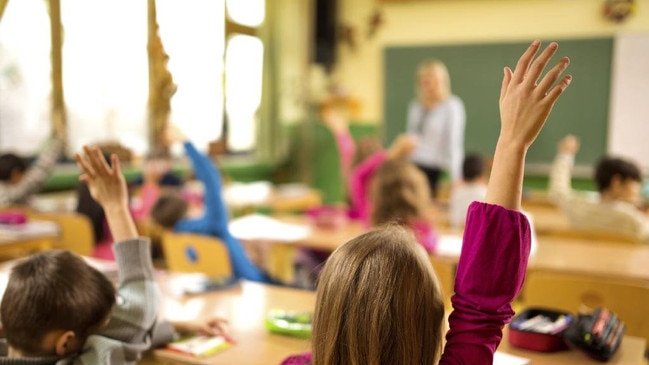Teacher turnover blamed for education decline across Australian classrooms, report
Australian schools have seen a ‘steady decline’ in levels of reading, mathematics and science, a report has warned.

Australian schools have seen a “steady decline” in levels of reading, mathematics and science due to high rates of turnover among teachers, long hours and a lack of career pathways in the profession, the OECD has warned.
An Organisation for Economic Co-operation and Development (OECD) report on education in Australia has found that disengagement among students was on the rise, linking it to “recent disruptions and pre-existing challenges of cumulative learning gaps”.
The report also noted that Australian teachers were grappling with “higher-than-average net teaching hours and slightly less competitive salaries”, stressing the importance of increasing the attractiveness of the profession as the sector faces a shortfall of 1400 teachers by 2025.
“Despite initiatives to improve the professionalisation of the teaching profession, there remained room to develop the pre-service training, preparation, and retention of Australian teachers,” the report says.
“Of particular concern was the high level of teacher attrition.
“The OECD identified that although progress had been made in professionalising and structuring the teacher career pathways, the extent to which the Australian Professional Standards for Teachers was used as a guide in teacher formation or applied in evaluation remained uneven.”
The report also highlighted the importance of developing a positive learning environment was essential to learning outcomes, noting that the “the disciplinary climate in schools in Australia was among the least favourable in the OECD”.
It also said that intimidation and bullying among students was prevalent in Australian classrooms occurring almost weekly, and truancy was also higher than the OECD average.
“A smaller share of Australian teachers than their peers across the OECD reported feeling prepared for, or capable of, managing disruptive classroom behaviour,” the report says.
The report also said Australia had a comparatively low bar for teaching degrees with “no competitive examination to start teaching”. However, it did note that 75 per cent of teachers had at least a bachelor‘s degree which is above the OECD average.
“Teaching does not seem to attract relatively high-performing students though, as evidenced by a negative score point difference in mathematics between students expecting a career in teaching and those expecting a career in other professions,” the report says.
“Quality professional development is key to help teachers already in service catch up with the needs of the profession.”
Despite the concerns, the report said that overall Australia remained a “high performer” in the Programme for International Student Assessment index.
Education Minister Jason Clare said the report “underlines the need for serious education reform in all areas of Australia’s education system”.
“It confirms the equity issues and teacher workforce challenges we face, particularly in early childhood education and school classrooms,” he said.
“While the report shows we have a good education system by international standards, we know that it should be a lot better and a lot fairer.”
Australian Education Union federal president Correna Haythorpe said it was concerning that Australia’s “PISA performance continues to decline and there are significant gaps in literacy and numeracy proficiency”.




To join the conversation, please log in. Don't have an account? Register
Join the conversation, you are commenting as Logout